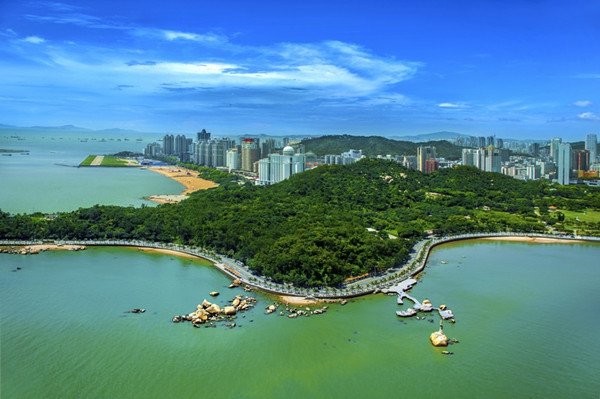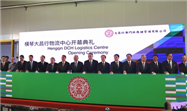Profile of Xiangzhou
Updated: 2019-02-20 (zhxz.gov.cn)  Print
Print 

Adjacent to Hong Kong and Macao, the Xiangzhou District is the political, economic and cultural center of Zhuhai. Located in the south of the Guangdong Province and on the west bank of the Pearl River Estuary, Xiangzhou covers an area of 550 square kilometers with a subtropical oceanic climate and picturesque scenery.
Upon the completion of the Hong Kong-Zhuhai-Macao Bridge, Zhuhai will become the only city within the Chinese mainland to connect Hong Kong and Macao by land. Xiangzhou District has a population of 880,600 with a registered population of 608,700 in 2017.
Xianghou District claims jurisdiction over the Town of Nanping and eight sub-district offices, including Shishan, Wanzai, Gongbei, Jida, Xiangwan, Meihua, Qianshan and Cuixiang. These eight sub-districts has more than 100 community resident committees, four ports including Gongbei, Jiuzhou, Wanzai and the Zhuhai-Macao Cross Border Industrial zone.
Xiangzhou, first established in 1984, is considered the epitome of China's transformation from a land-based to a marine economy and culture. Over the years, the Xiangzhou District has radically matured from a remote village into a stunning coastal city the economic and social development of which has attracted both domestic and foreign attention and praise.

The Fenghuang Bay of Xiangzhou District
The district is also the hometown of many modern, well-known Chinese figures: Rong Hong (Yuan Wing), an educator and the first Chinese student to receive an American collegiate degree; Chen Fang (Chun Afong), the first Chinese consul to Hawaii; Yang Paoan (Lintao), who first introduced Marxism to South China; Rong Guotuan, the first Chinese world champion of table tennis; Su Manshu, a leading literary figure; Tang Disheng, a famous Cantonese opera screenwriter; and Gu Yuan, a renowned artist.

Rong Hong (Yung Wing)[Photo from picturechina.com.cn]
In the past three decades, Xiangzhou has experienced coordinated development of its economy, society and environment. The district's economy has consistently — and quickly — grown from the success of innumerable social undertakings, reformation of the social management system, and a stable business environment. The district's GDP was 132.4 billion yuan ($19.6 billion) in 2018 — an increase of 7.0 percent year on year.
In 2015, Zhuhai was honored as a “national civilized city” and Xiangzhou District was named as a national ecological civilization construction demonstration plot, national scientific and technological advancement area, national science popularization demonstration area, and a national peace and security construction advanced area. The district was also designated a national “two basic works” advanced area because it has universalized nine-year compulsory education and eliminated illiteracy among young and mid-aged adults. It has also been evaluated as a national equalized area of compulsory education development and an experimental area of the Guangdong provincial community.
 Xiangzhou District, Zhuhai
Xiangzhou District, Zhuhai

 Macao businesses prosper in Zhuhai
Macao businesses prosper in Zhuhai  Buses serving Xiangzhou-Hongwan Fishing Port route
Buses serving Xiangzhou-Hongwan Fishing Port route